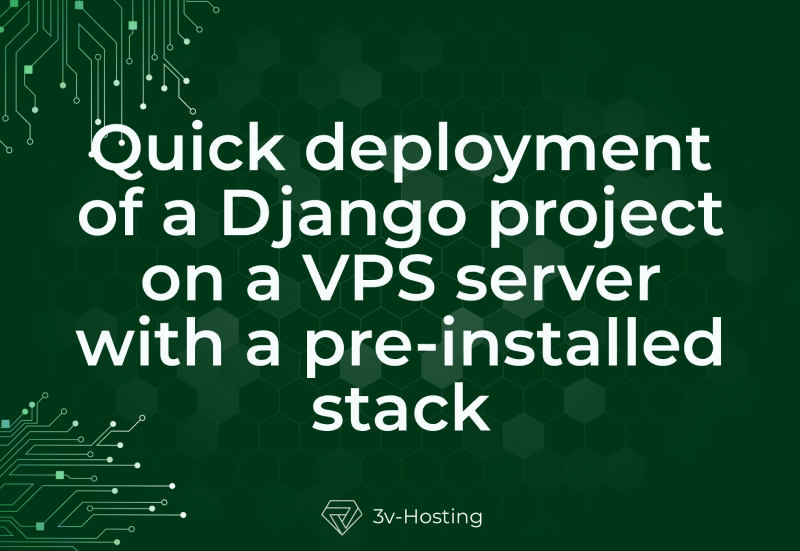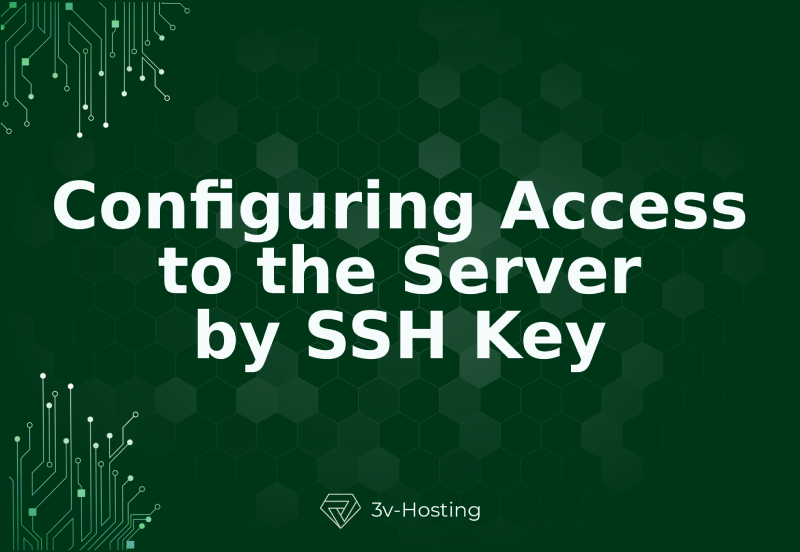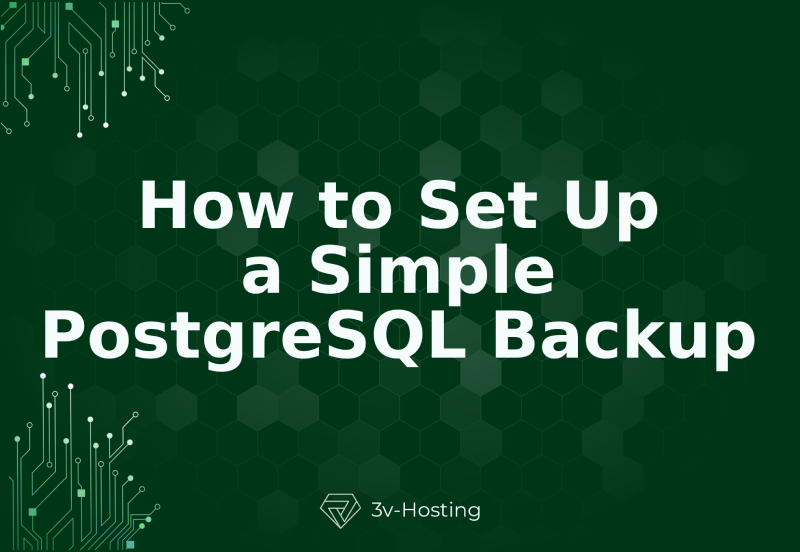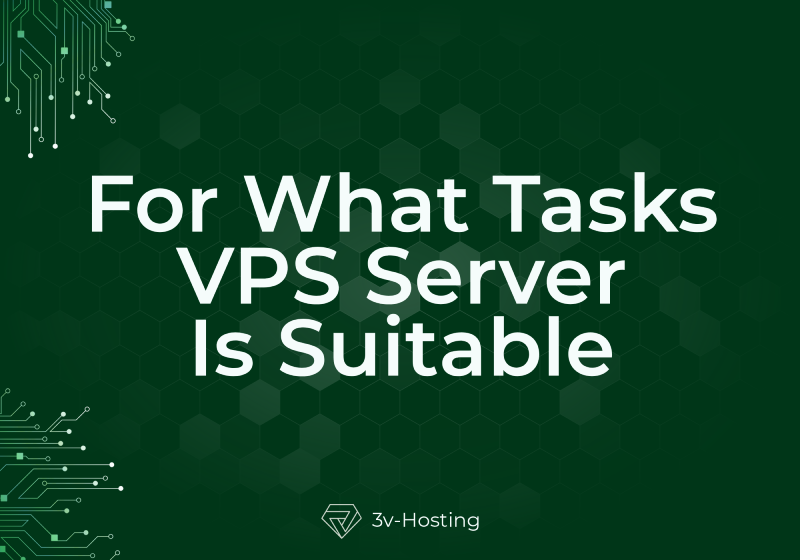Our Blog
Latest articles in our Blog

Quick deployment of a Django project on a VPS server with a pre-installed stack
Tired of setting up Nginx, Gunicorn, and PostgreSQL every time you deploy Django? There’s a new kind of VPS made just for that - everything’s pre-installed and ready. Log in, run a script, and your site’s live in minutes.
Tired of setting up Nginx, Gunicorn, and PostgreSQL every time you deploy Django? There’s a new kind of VPS made just for that - everything’s pre-installed and ready. Log in, run a script, and your site’s live in minutes.
Tired of setting up Nginx, Gunicorn, and PostgreSQL every time you deploy Django? There’s a new kind of VPS made just for that - everything’s pre-installed and ready. Log in, run a script, and your site’s live in minutes.

How Processor Frequency Affects VPS Performance
Processor frequency is a critical factor in VPS performance, especially for tasks that require fast, sequential processing. In virtualized environments, the actual impact depends on workload type, core allocation, and hypervisor overhead. This article definitively explores how GHz affects real-worl…
Processor frequency is a critical factor in VPS performance, especially for tasks that require fast, sequential processing. In virtualized environments, the actual impact depends on workload type, core allocation, and hypervisor overhead. This article definitively explores how GHz affects real-worl…
Processor frequency is a critical factor in VPS performance, especially for tasks that require fast, sequential processing. In virtualized environments, the actual impact depends on workload type, core allocation, and hypervisor overhead. This article definitively explores how GHz affects real-world VPS speed and helps you choose the right configuration.

5 Reasons to Choose VPS Over Cloud
When choosing between VPS and cloud hosting, it's crucial to recognize the advantages a Virtual Private Server can provide. This article confidently presents five compelling technical reasons to choose VPS over cloud: cost predictability, full system access, infrastructure simplicity, performance c…
When choosing between VPS and cloud hosting, it's crucial to recognize the advantages a Virtual Private Server can provide. This article confidently presents five compelling technical reasons to choose VPS over cloud: cost predictability, full system access, infrastructure simplicity, performance c…
When choosing between VPS and cloud hosting, it's crucial to recognize the advantages a Virtual Private Server can provide. This article confidently presents five compelling technical reasons to choose VPS over cloud: cost predictability, full system access, infrastructure simplicity, performance consistency, and suitability for stable workloads. If you're building reliable, self-managed environments without the complexity of cloud orchestration, VPS is the smarter option.

What Are ChatGPT’s Limits?
You must be wondering why ChatGPT suddenly stops mid-reply or throws rate limit errors right when you need it most. This article definitively breaks down the real limits behind ChatGPT — message caps, token size ceilings, and API throttling — and why they exist. This article is for developers and s…
You must be wondering why ChatGPT suddenly stops mid-reply or throws rate limit errors right when you need it most. This article definitively breaks down the real limits behind ChatGPT — message caps, token size ceilings, and API throttling — and why they exist. This article is for developers and s…
You must be wondering why ChatGPT suddenly stops mid-reply or throws rate limit errors right when you need it most. This article definitively breaks down the real limits behind ChatGPT — message caps, token size ceilings, and API throttling — and why they exist. This article is for developers and sysadmins. It includes practical tips, code examples, and some hard truths about working within AI boundaries.

The Green Server Revolution: Online Computer Science and Hosting Ecology
Technology today has brought unparalleled convenience, connectivity, and innovation. However, it also carries a hidden environmental cost. Every click, stream, and download relies on vast data centers powered by electricity-hungry servers. As our reliance on digital infrastructure grows, so too do…
Technology today has brought unparalleled convenience, connectivity, and innovation. However, it also carries a hidden environmental cost. Every click, stream, and download relies on vast data centers powered by electricity-hungry servers. As our reliance on digital infrastructure grows, so too do…
Technology today has brought unparalleled convenience, connectivity, and innovation. However, it also carries a hidden environmental cost. Every click, stream, and download relies on vast data centers powered by electricity-hungry servers. As our reliance on digital infrastructure grows, so too does its carbon footprint. From the energy required to cool data centers to the environmental toll of manufacturing hardware, the ecological impact of our online lives is increasingly difficult to ignore.

3v-Hosting’s Business-Class Web Hosting Recognized as the Best Backup Software by Leading Software Directory
3v-Hosting has earned recognition from Research.com as the best backup software for its proven reliability, robust security features, and customer-focused service approach.
3v-Hosting has earned recognition from Research.com as the best backup software for its proven reliability, robust security features, and customer-focused service approach.
3v-Hosting has earned recognition from Research.com as the best backup software for its proven reliability, robust security features, and customer-focused service approach.

Configuring Access to the Server by SSH Key
In today's IT environments, it is imperative to have secure and efficient server access. SSH key-based authentication is a reliable alternative to traditional passwords. This article provides a detailed, step-by-step guide on how to configure access to a server using SSH keys. The guide includes in…
In today's IT environments, it is imperative to have secure and efficient server access. SSH key-based authentication is a reliable alternative to traditional passwords. This article provides a detailed, step-by-step guide on how to configure access to a server using SSH keys. The guide includes in…
In today's IT environments, it is imperative to have secure and efficient server access. SSH key-based authentication is a reliable alternative to traditional passwords. This article provides a detailed, step-by-step guide on how to configure access to a server using SSH keys. The guide includes instructions on generating key pairs and copying them to the server, disabling password login, and applying best security practices. This guide is an essential resource for system administrators and developers. It provides a comprehensive overview of key management for multiple users and automation tools. If you manage Linux-based infrastructure, this guide is a must-read.

How Using AI for Search Is Changing Approaches to SEO
The rise of AI-powered search engines is transforming the way SEO works. The focus is shifting from keyword density to context, intent, and semantic understanding. This article confidently explores how technologies like natural language processing, machine learning, and structured data are redefini…
The rise of AI-powered search engines is transforming the way SEO works. The focus is shifting from keyword density to context, intent, and semantic understanding. This article confidently explores how technologies like natural language processing, machine learning, and structured data are redefini…
The rise of AI-powered search engines is transforming the way SEO works. The focus is shifting from keyword density to context, intent, and semantic understanding. This article confidently explores how technologies like natural language processing, machine learning, and structured data are redefining content relevance, user experience, and technical optimization. Adapt your SEO strategy for the era of intelligent search and stay ahead in a rapidly evolving digital landscape.

How to Set Up a Simple PostgreSQL Backup
This article gives you the tools you need to set up a simple PostgreSQL backup using built-in tools like pg_dump, pg_basebackup, and rsync. It clearly explains the differences between logical and physical backups, offers practical automation tips with cron, and emphasizes the importance of regular …
This article gives you the tools you need to set up a simple PostgreSQL backup using built-in tools like pg_dump, pg_basebackup, and rsync. It clearly explains the differences between logical and physical backups, offers practical automation tips with cron, and emphasizes the importance of regular …
This article gives you the tools you need to set up a simple PostgreSQL backup using built-in tools like pg_dump, pg_basebackup, and rsync. It clearly explains the differences between logical and physical backups, offers practical automation tips with cron, and emphasizes the importance of regular verification and safe storage. You need a reliable backup strategy. This guide will teach you how to implement one without relying on third-party services, whether you're running a personal project or managing a production database.

For What Tasks VPS Server Is Suitable
A VPS server is the ideal solution for a variety of technical tasks, including hosting high-performance websites, deploying custom software, managing VPNs, cloud storage, mail servers, game servers, and automation tools. This in-depth article explores the many real-world use cases of virtual privat…
A VPS server is the ideal solution for a variety of technical tasks, including hosting high-performance websites, deploying custom software, managing VPNs, cloud storage, mail servers, game servers, and automation tools. This in-depth article explores the many real-world use cases of virtual privat…
A VPS server is the ideal solution for a variety of technical tasks, including hosting high-performance websites, deploying custom software, managing VPNs, cloud storage, mail servers, game servers, and automation tools. This in-depth article explores the many real-world use cases of virtual private servers and explains why VPS hosting is a smart choice for developers, businesses, and IT professionals.










